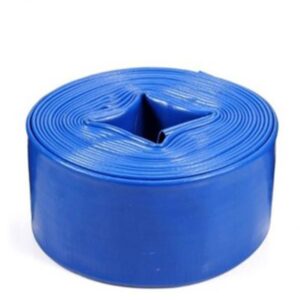What are the primary components that make up a spray hose system?
A spray hose system typically comprises several primary components that work together to facilitate water or liquid distribution in various applications.
These components include:
- Hose: The hose itself forms the main conduit through which water or liquids flow. It’s typically flexible and made of materials like PVC, rubber, or polyurethane, chosen for their durability and flexibility.
- Fittings and Connectors: These components allow the hose to be connected to water sources, nozzles, or other accessories. They come in various types like couplings, adapters, quick-connect fittings, and threaded connectors.
- Nozzles or Sprayers: These attachments determine the spray pattern, flow rate, and pressure of the liquid emitted from the hose. They can include adjustable nozzles, spray guns, sprinkler heads, or specialized attachments for specific purposes.
- Valves: Some spray hose systems incorporate valves for controlling water flow. These can be manual valves or automated valves that regulate water distribution or shut off the flow entirely.
- Filters: Filters are optional but highly beneficial components that prevent debris or particles from entering the hose and clogging the nozzles or valves. They help maintain the system’s efficiency by ensuring a clean and consistent flow.
- Hose Reels or Holders: These accessories provide storage and organization for the hose when not in use, preventing tangles and prolonging the hose’s lifespan.
- Hose Clamps: In some setups, hose clamps are used to secure the hose to fittings or connectors, ensuring a tight and leak-proof connection.
- Pressure Regulators (optional): Some advanced systems may include pressure regulators to control the water pressure within the hose, ensuring consistent pressure for optimal performance.
- Trigger or Control Mechanism: In spray gun attachments, there’s often a trigger or control mechanism that allows users to start or stop the water flow and adjust the spray pattern or intensity.
- Swivels (optional): Swivels may be included in some setups to provide flexibility and prevent hose kinking during use.
These components collectively form a spray hose system, offering versatility, control, and functionality for a wide range of applications, including watering gardens, cleaning surfaces, applying pesticides or fertilizers, and more.
What nozzle attachments or accessories are typically used with spray hoses, and how do they affect water dispersion or pressure?
Several nozzle attachments or accessories can be used with spray hoses, each designed to alter water dispersion, pressure, and spray patterns for specific purposes.
Here are some common nozzle attachments and their effects:
- Adjustable Nozzles: These versatile nozzles allow users to change the spray pattern from a focused stream to a wider mist by adjusting the nozzle’s head or dial. They affect both water dispersion and pressure based on the selected setting.
- Fan Nozzles: Fan nozzles produce a wide, fan-shaped spray pattern, ideal for covering larger areas with a consistent and even distribution of water. They typically operate at lower pressures and disperse water uniformly.
- Rotating Nozzles: Also known as rotary or oscillating nozzles, these attachments create a rotating spray pattern that covers a larger area. They are commonly used for lawn irrigation or general watering tasks.
- Shower Nozzles: Shower nozzles produce a gentle, rain-like spray pattern, suitable for delicate plants or applying water without causing soil erosion. spray hose They often operate at lower pressures for gentle watering.
- High-Pressure Nozzles: Designed to handle higher water pressures, these nozzles produce a powerful, focused stream suitable for cleaning tasks like washing vehicles or removing debris from surfaces.
- Cone Nozzles: Cone-shaped spray patterns are emitted by these nozzles, offering versatility in coverage for both narrow and wider areas. They are often used in gardening or general-purpose watering.
- Misting Nozzles: Misting nozzles produce a fine mist, ideal for humidifying or cooling outdoor areas. They operate at lower pressures to create a mist without excessive water use.
- Foam Nozzles (for soap or detergent): These nozzles create a foam or lather when mixed with soap or detergent. They are used in pressure washers or cleaning applications for better soap dispersion.
- Fertilizer or Chemical Injection Nozzles: Some spray hoses have attachments that allow the injection of fertilizers or chemicals directly into the water stream for precise application while watering or spraying crops.
Each nozzle attachment is designed to meet specific needs, whether it’s watering delicate plants, covering larger areas, performing cleaning tasks, or applying substances. They affect water dispersion, coverage area, and pressure to provide the desired watering or cleaning effect. Users can select the appropriate nozzle attachment based on the intended use and required spray pattern.

